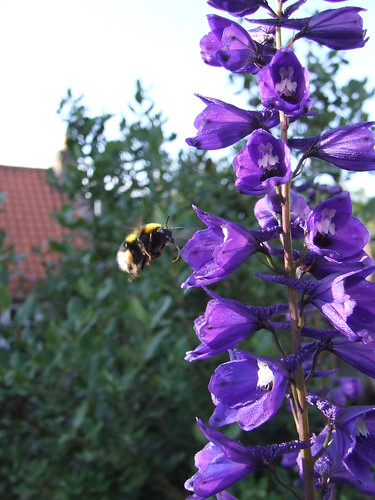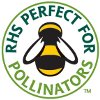Whether or not you have an interest in gardening there’s a good chance that you know our local species of bees, butterflies and other pollinating insects are now in a struggle for their very survival. But it needn’t bee (excuse the pun) that way.
 |
Recent BBC TV programme Bees, Butterflies and Blooms, presented the case for reintroducing many indigenous species of wildflower that in recent history have all but disappeared from our gardens, verges and open spaces.
Presented by Sarah Raven, the show argues that if we don’t act then many native species of pollinating insects are in danger of being lost forever.
At Pencaitland Community Council we’re keen to take up this challenge and explore ways that the local community can work together. We want to pinpoint areas which, rather than being left as mowed strips of grass or beds with nectar-poor plants, could be populated with a variety of native and other nectar-rich species that would give our wildlife a chance at long term recovery.
 |
If you missed Sarah Raven’s show the key point was that we should consider returning parts of parks and all mown roadside verges into little meadows of annual and perennial wild flowers. The evidence is that it actually works out much cheaper to maintain for local authorities, it provides food for wildlife, and it looks a whole lot more attractive.
East Lothian Council has already been experimenting in other parts of the county for a few years so this isn’t a novel idea. It’s more about building on those positive first steps.
Q. What do you think? Should we work with East Lothian Council to make more of our green spaces better for native bees, butterflies and other insects? Please share your thoughts below and tell us which places you think might be suitable in and around Pencaitland.
Useful Links
The Stopwatch Gardener Blog, “Nectar-rich versus Franken-flowers”
TV Programme, “Bees, Butterflies and Blooms”
Royal Horticultural Society, “Perfect for Pollinators”
Bumblebee Conservation Trust, “Gardening for bumblebees”
Plantlife Scotland “Wild Plants in Scotland”

These are amazing video clips showing pollination – have a look. Stunning! http://www.buzzaboutbees.net/pollination.html?utm_source=twitterfeed&utm_medium=twitter
Good plan. Hate the endless weeds and nettles all overthe unkept green parts of the village, like down at the riverside. The bits that are ‘looked after’ on the main road are just mowed, which is pointless.
Much better to seed with lots of wild flowers and give it a few years when it will look great on the road, won’t hurt kids (nettles in the woods) and need a lot less looking after than the boring stuff we have right now.
Johnny
I think it’s a great idea.
One area that springs to mind is the land around the dovecot at Wester Pencaitland, but not sure if that’s council land or privately owned so might be a non-starter.
I love this idea and the pollinators will, too! By the way, for anyone who’s worried that bee-friendly will look a mess, it’s not necessarily the case. I think we’re talking about two kinds of planting places here: prominent beds (in central places like the Mercat Cross or the War Memorial) and informal beds like the roadside near the gates to Winton House. Informal beds could have a wildflower meadow look (more crocus, bluebells, red clover, phaecelia, cornflowers, poppies); while prominent beds could have more structure and formality (salvia, rudbeckia, cosmos, single dahlias).
This latter look is already being used successfully in many Council beds (at the road corner near the Loch Centre in Tranent, in New Winton main square, near Maitlandfield Hotel in Haddington); ensuring those beds offer pollen and nectar earlier in the year is a simple and important step.
The wildflowers we use don’t necessarily have to be native species (for example phaecelia isn’t native) but they should cater for the sometimes picky tastes of some of the more endangered bumblebees; the Bumblebee Conservation Trust has more information on what species we could best choose.
Sheila Averbuch – Stopwatch Gardener